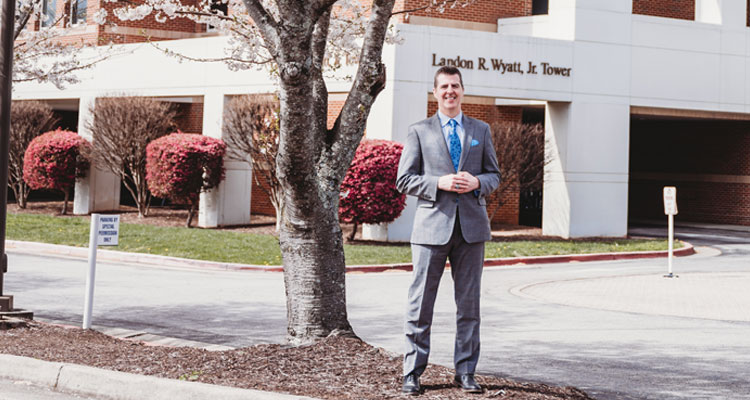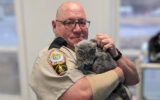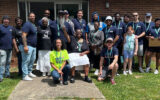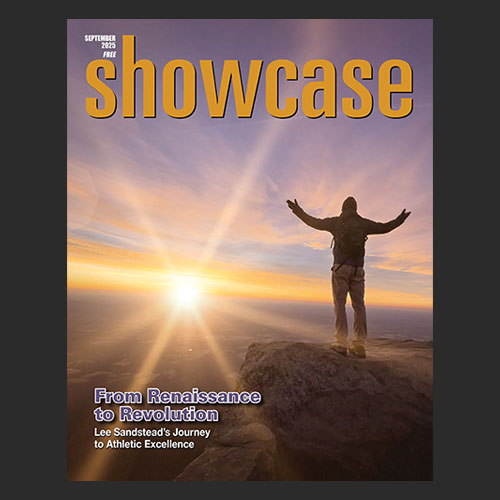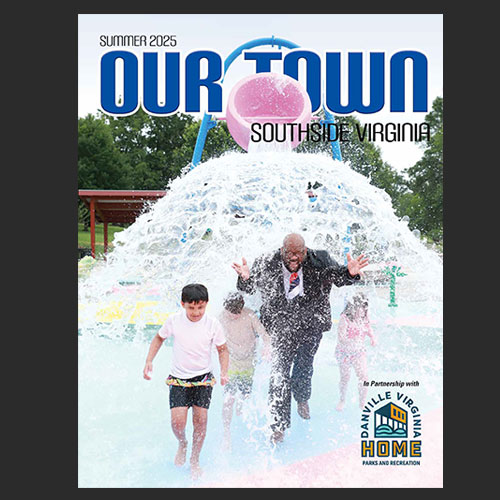New CEO of SOVAH Health, Steve Heatherly wants to see the hospital make a difference in individual lives and the community. He began a career in health care over 25 years ago after obtaining an undergraduate degree in financial management from UNC-Asheville. Heatherly then earned a master’s degree in business administration from Western Carolina University and a master’s degree in health care administration from UNC-Chapel Hill. He considers himself fortunate to have varied experience in health care, including being the CEO of multiple physician organizations and having been a CFO, COO, and CEO of hospital organizations.
Heatherly’s wife is an assistant principal at Tuscola High School in Waynesville, North Carolina. The couple has two sons. Their older son is preparing to go to medical school this summer. Their younger son is a sophomore at UNC-Charlotte. The Heatherlys are a sports family. They love going to sporting events together and are rabid fans of the Dallas Cowboys. Heatherly loves to exercise, read, and play golf occasionally, but confessed he is “not very good.”
Showcase sat down with the new CEO to discuss the current state of SOVAH Health, along with plans and improvements.
Showcase Magazine: What led you to take this position with SOVAH Health?
Steve Heatherly: I have a passion for rural health care. In rural communities, hospitals are, or should be, central to community life. I knew of SOVAH Health from my time as CEO of two Duke Lifepoint Hospitals in western North Carolina. When I was approached about this position, I was immediately interested due to the size of the market and opportunities I saw to make an impact on the communities served by SOVAH Health. In addition, I was drawn to how this community is poised to grow and wanted to be a part of that.
SM: What are some challenges you believe the hospitals in Danville and Martinsville currently face? And what are some challenges you foresee moving forward?
SH: Our campuses face workforce challenges that currently plague the entire hospital industry. In addition, we have some gaps in key physician specialties that must be filled. These things, taken together, sometimes mean that there are limits on the extent to which we can serve patients locally for the care we should provide. Though the issue has many facets that can vary daily, the staffing challenges have created a challenging operating environment in our emergency department where wait times can be too long, and we have to transfer too many patients. Our team is working diligently to improve that situation so that we can serve more patients in their community. While this is a challenge, we do have the staff to safely take care of our patients.
Going forward, I think the staffing challenges will be with us for a while as they will be at almost every hospital. There simply are not enough clinical staff to go around, in most cases. The pandemic has fundamentally changed the workforce. We are going to have to rethink the way we engage people coming into the workforce, and how we assemble our care teams to include how we use technology to support our clinical staff in providing care.
SM: How do you plan to address some of the perception problems that SOVAH currently has?
SH: I have conducted interviews with over 100 people so far, both inside and outside our organization, and have come to understand that there are, indeed, perception challenges for our hospital campuses. The way I know to build trust and confidence is to do so one patient at a time. This will be a steady drumbeat in our facilities – meeting the needs of every single patient, one patient at a time. There are incredible people working at SOVAH Health. Talented people who want to care for their friends, families, and neighbors. I round on patients almost every day and there is certainly a disconnect between the overall perception and the generally positive feedback I get when I engage directly with patients and families. In some cases, we need to build capacity so that we can more reliably care for patients close to home. Finally, we need to be an engaged, authentic, and transparent partner with our key community stakeholders, acknowledging our challenges and working collaboratively in a solution-oriented manner.
SM: How do you see technology playing a role in the future of health care and patient care at SOVAH Health?
SH: Clinical technology will continue to evolve and allow us to care for patients more efficiently and precisely. For example, we will install a new linear accelerator in our cancer center this year that will deliver more precise doses of radiation to cancer patients, allowing for more effective treatment with fewer side effects. Telehealth will continue to evolve and, I think, will make certain types of care more accessible. A good example is behavioral health in primary care. Our industry has a great opportunity to more effectively treat behavioral health conditions as a part of primary care, but there is a shortage of behavioral health practitioners. Telehealth can help minimize the shortage by making well-trained practitioners more widely accessible. I also think that the time has come for us to consider how virtual nursing can play a role in delivering care to inpatients, not as a replacement of bedside nurses, but as an aide to the work being done by bedside nurses, easing their burden during this intense labor shortage.
At SOVAH Health, we will be assessing technology, like robotic surgery, that will enable us to shorten lengths of stay and reduce complications for patients.
SM: What steps is SOVAH Health taking to promote diversity, equity, and inclusion within the organization and the wider community?
SH: One of our core values is Embracing Individuality. This is at the core of diversity, equity, and inclusion. One of my personal goals is to leverage the unique perspectives, talents, and experiences of each individual in our organization. Those items in each of us come from our unique journey, and taken together, make us stronger, individually and collectively. That is at the heart of diversity, equity, and inclusion.
The same principles apply in the wider community. One of the things I love about rural communities is that it truly takes all of us – individuals and organizations – doing our part for the community as a whole to realize its full potential. Implicit in that statement is valuing diversity so that we take advantage of the best in each of us, making for richer and better community life for all.
SM: Could you speak to any recent developments or initiatives within research or innovation at SOVAH Health?
SH: SOVAH Health engages in research and innovation in a variety of ways. First, our organization maintains a number of accreditations and certifications (e.g. Stroke Center, Chest Pain Center, Congestive Heart Failure) that require us to remain current on evolving evidence-based best practice so that the patients we serve are benefitting from the latest advancements in care delivery. In addition, our oncology program participates in and navigates patients through clinical trials for cancer treatment.
Our family medicine and internal medicine residency program has established a national best practice patient safety meeting in which residents, leaders, attending physicians, front-line staff, and others come together to study emerging patient safety issues, often solving them in real time. In addition, our residents are required to participate in research and scholarly activity. This academic year 23 projects were submitted with one winning a national first-place prize and another a national third-place prize.
SM: How does SOVAH Health collaborate with other healthcare providers and stakeholders in the region to improve health outcomes for the community?
SH: At SOVAH Health, we recognize that while we are central to meeting the health care needs of our communities, we cannot do it alone and must collaborate with many other agencies and organizations in the community. One way is to understand the health care needs and perspectives of key businesses in the community. To that end, we will be convening a Business Roundtable group to create a forum for dialogue. The first meeting of this group should be in the next 60 to 90 days. Creating a new generation of the health care workforce is essential to our future success and we partner with the school system, Danville Community College, and Averett University in a number of ways to meet this need. Working with various stakeholders to have a continuum of care for behavioral health is an important collaboration. Even within our physician community, we recognize that we can’t own every access point to care, so we endeavor to maintain an open dialogue with private practices and other providers so that we are coordinating efforts as best we can. Finally, I would say that successful collaboration with our emergency medical services providers is essential to the community having access to the right care at the right time. I am still learning about the challenges and opportunities, but can say that I will commit the organization to be a fully engaged partner.
This interview has been slightly edited for clarity.

